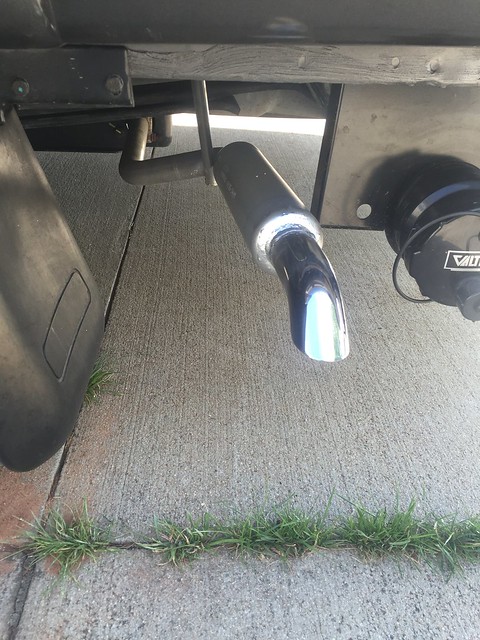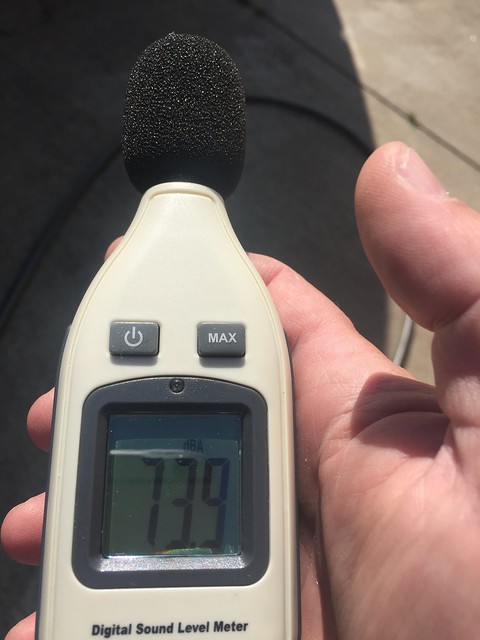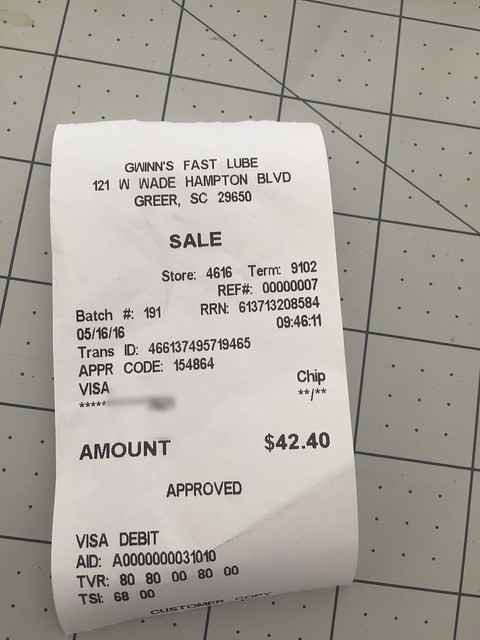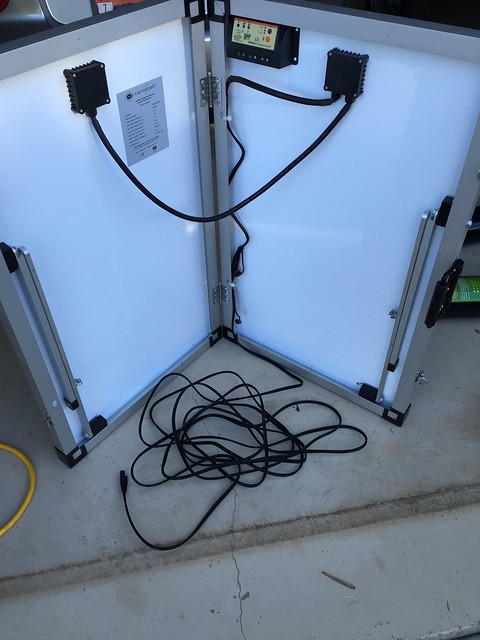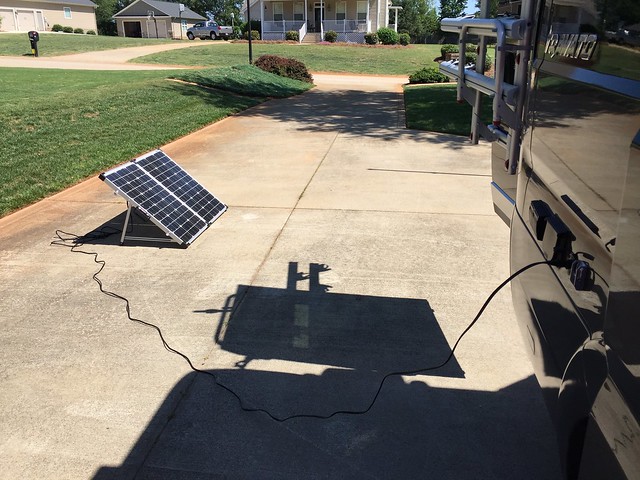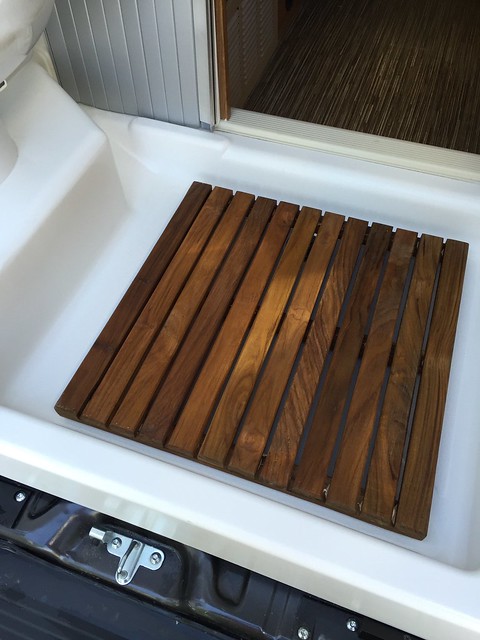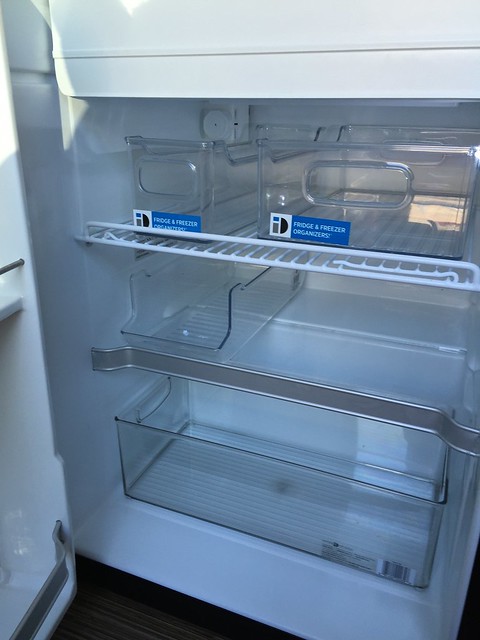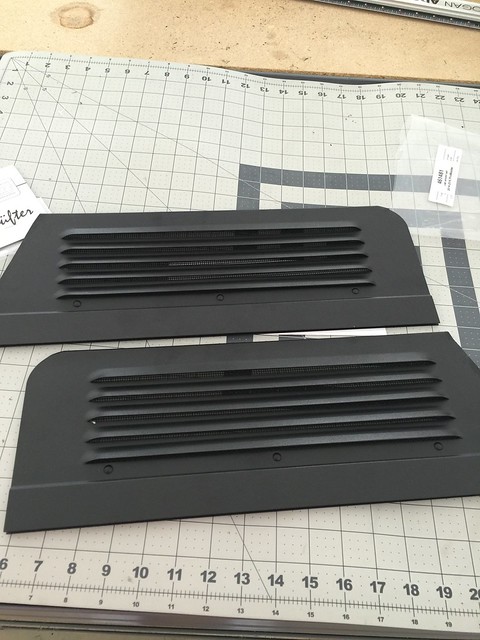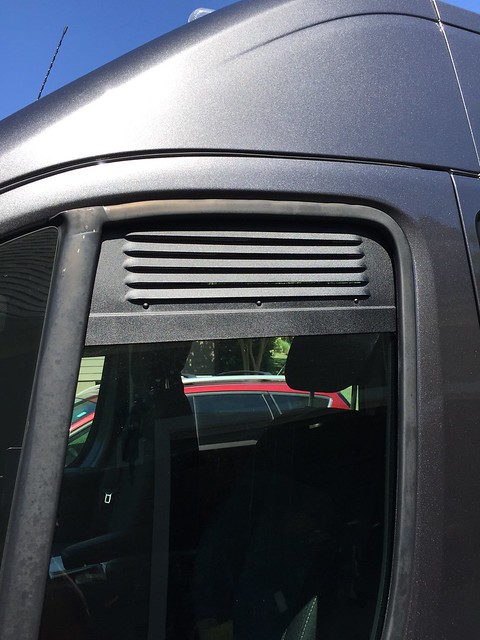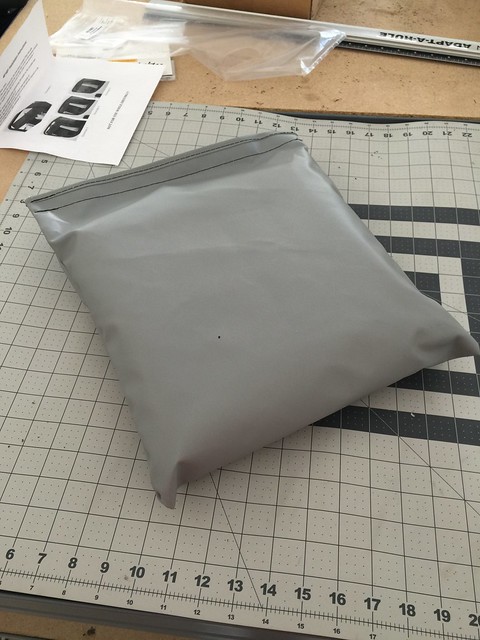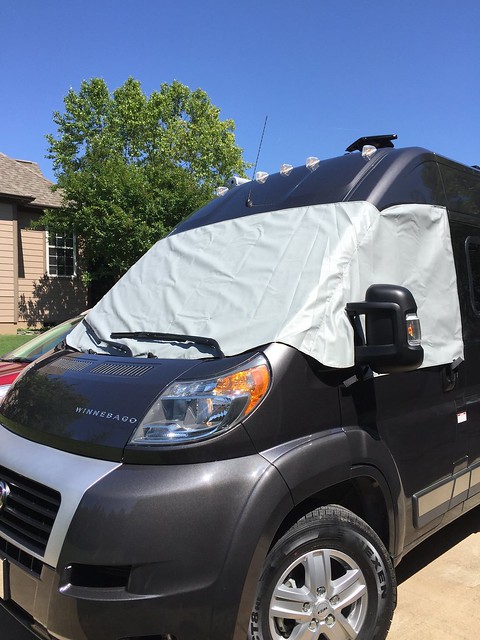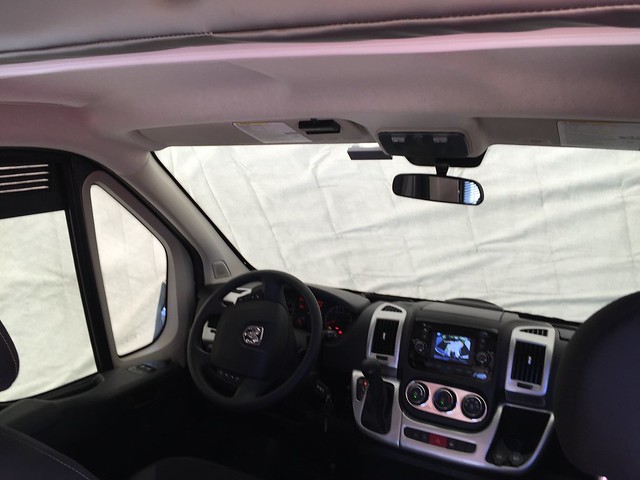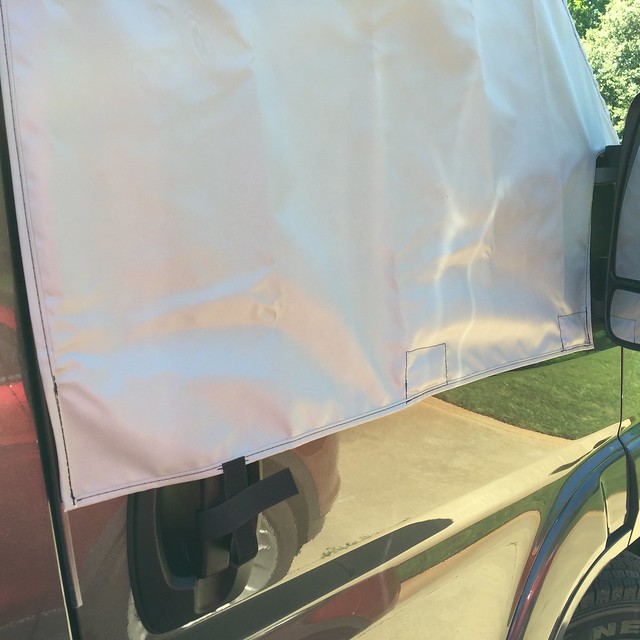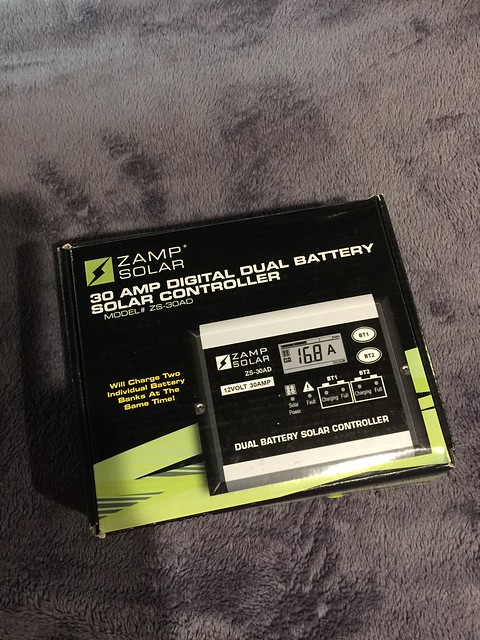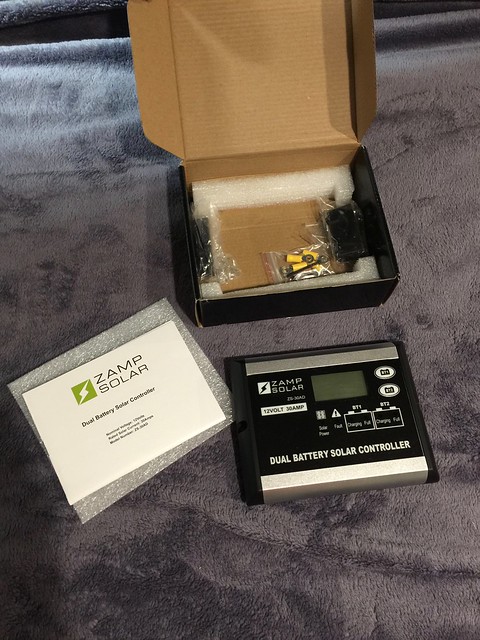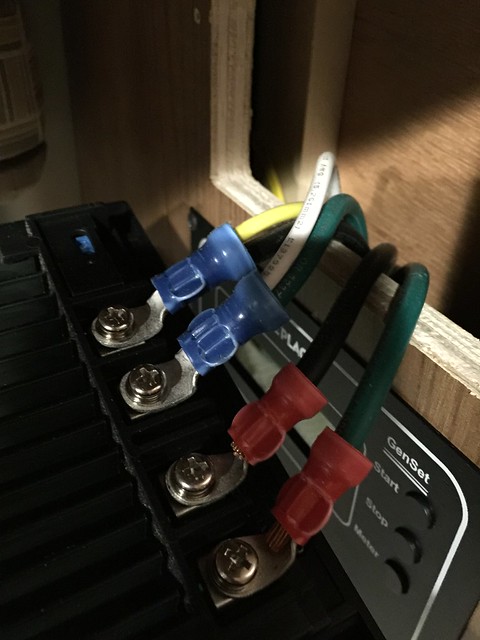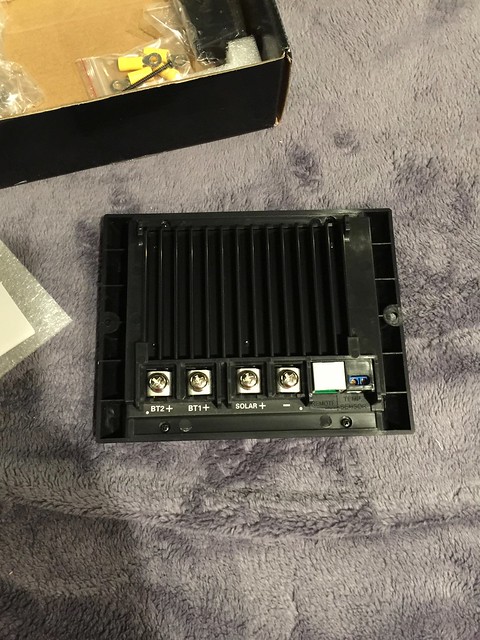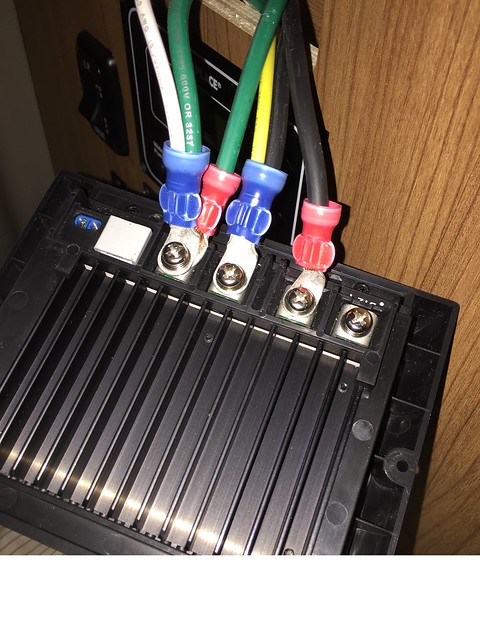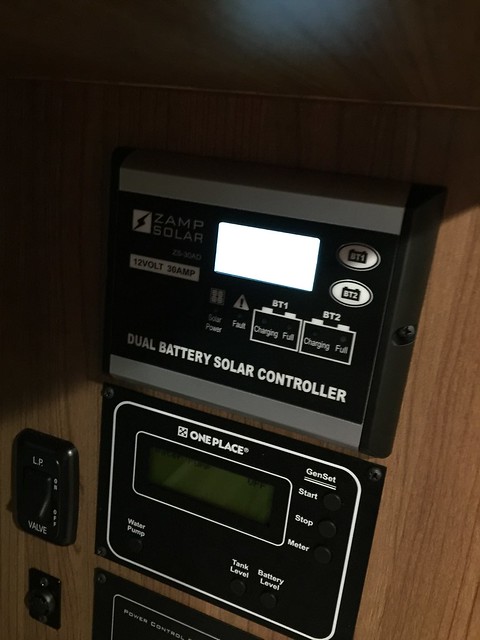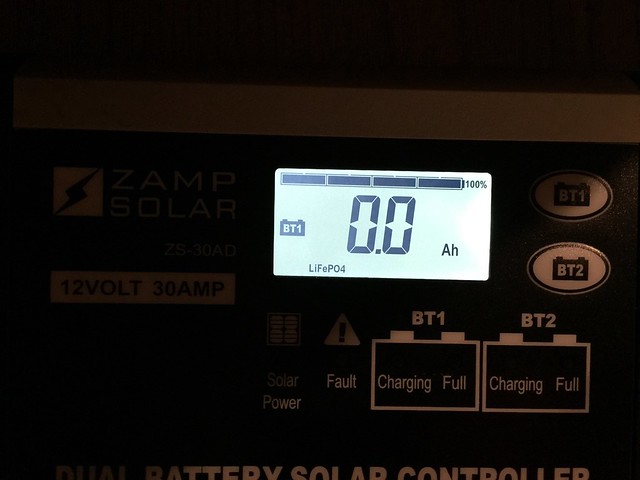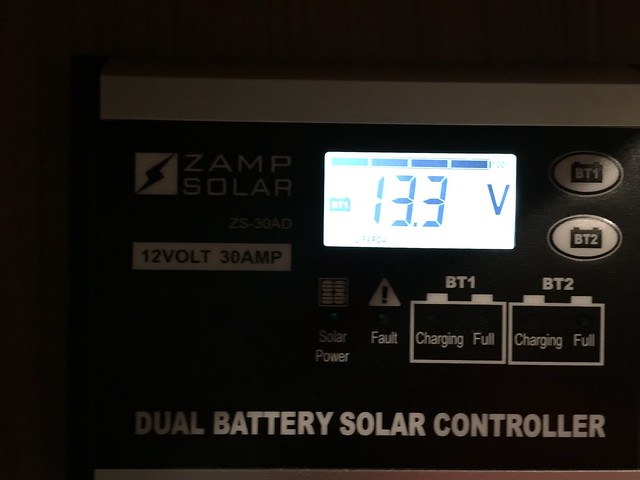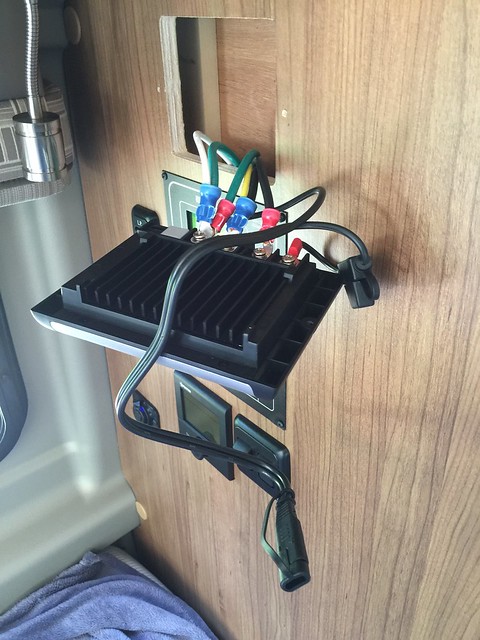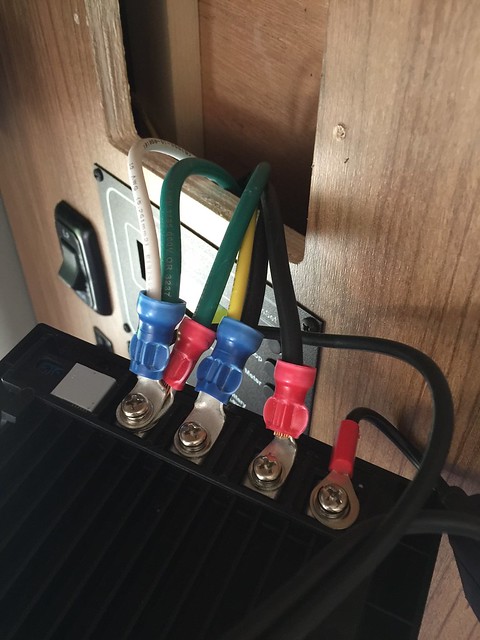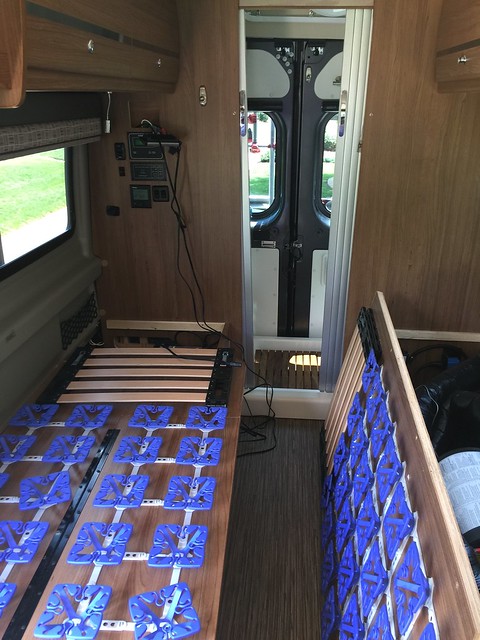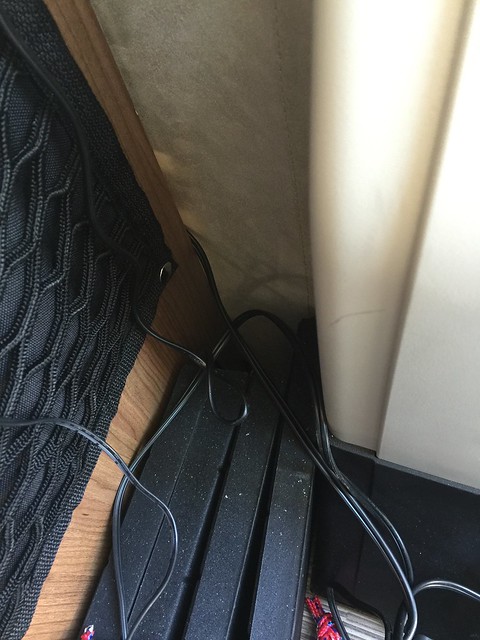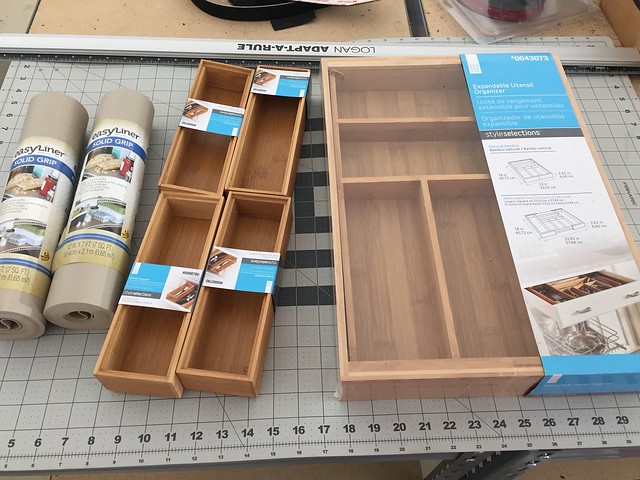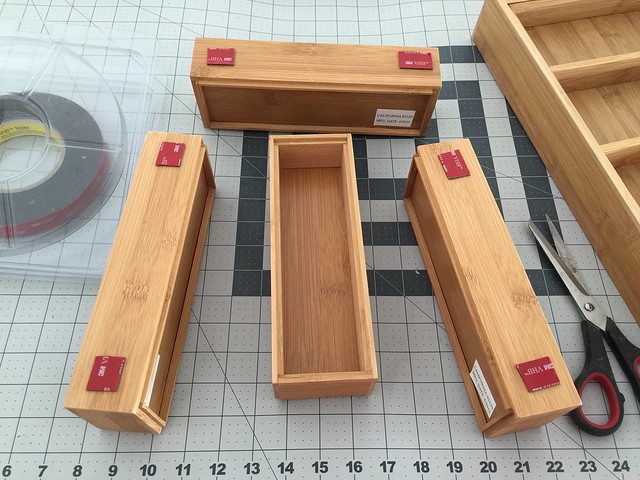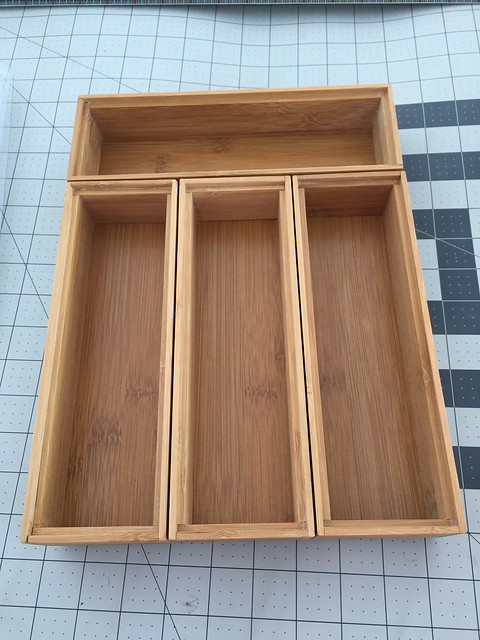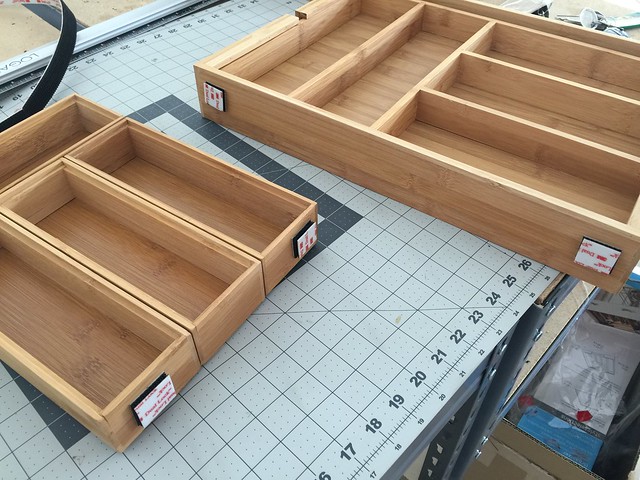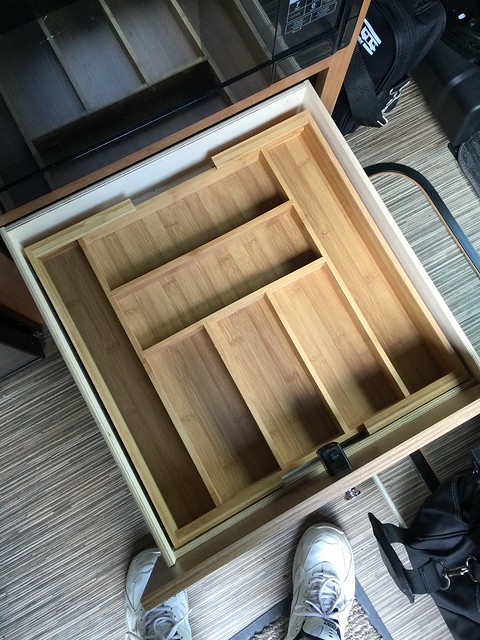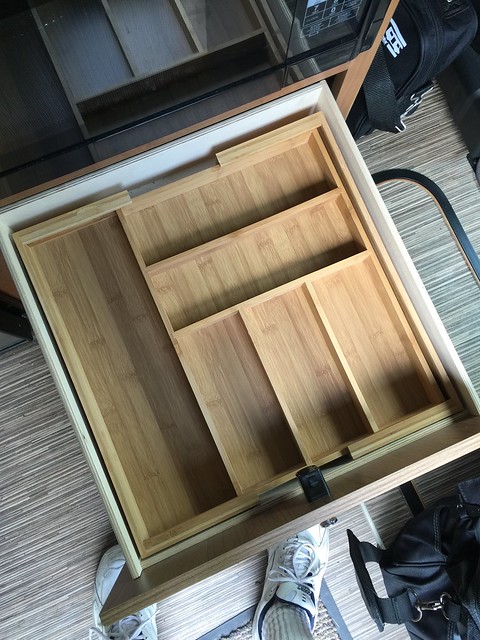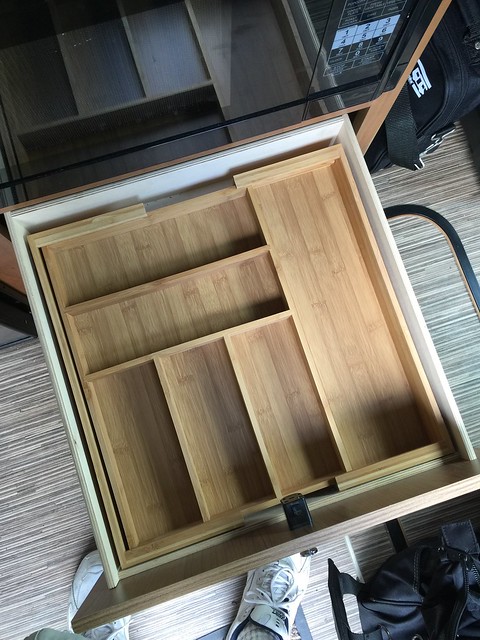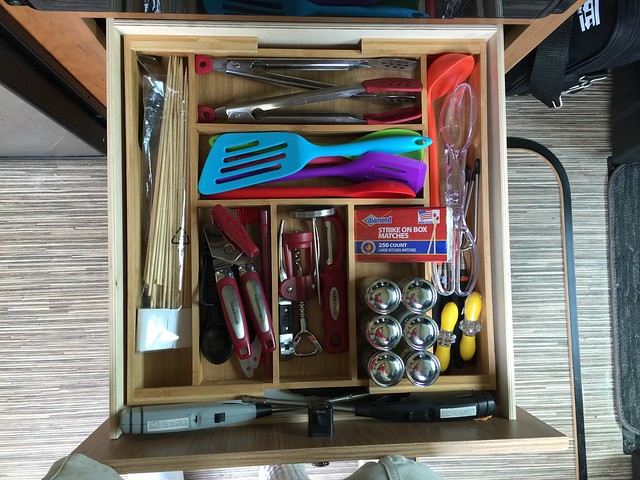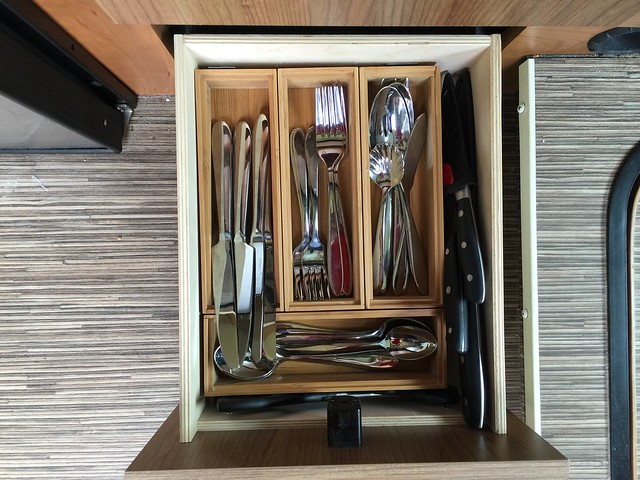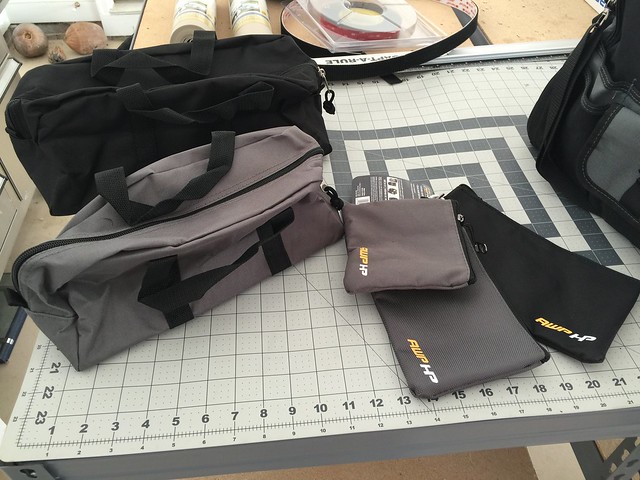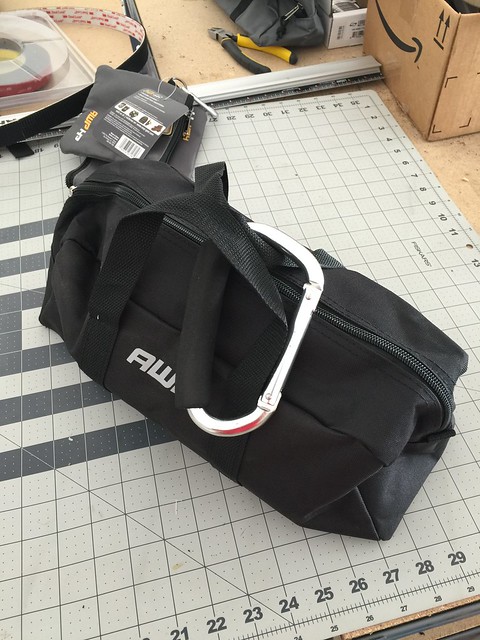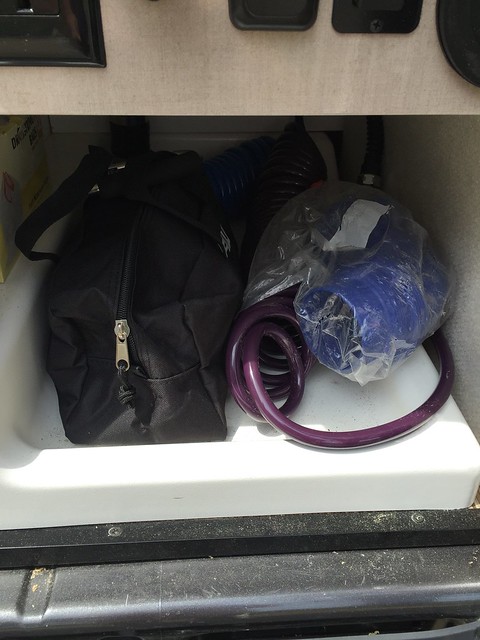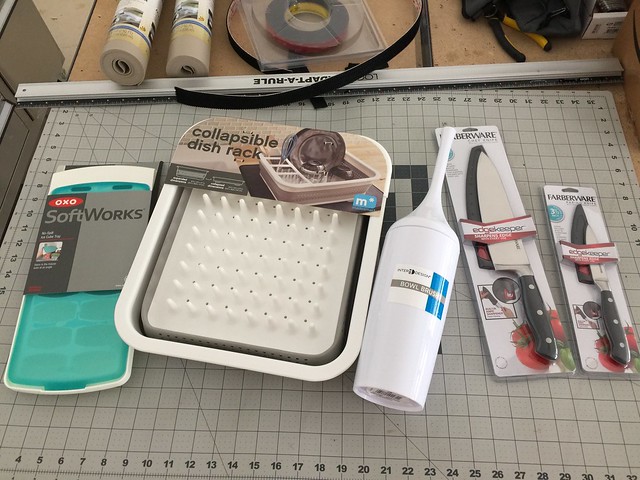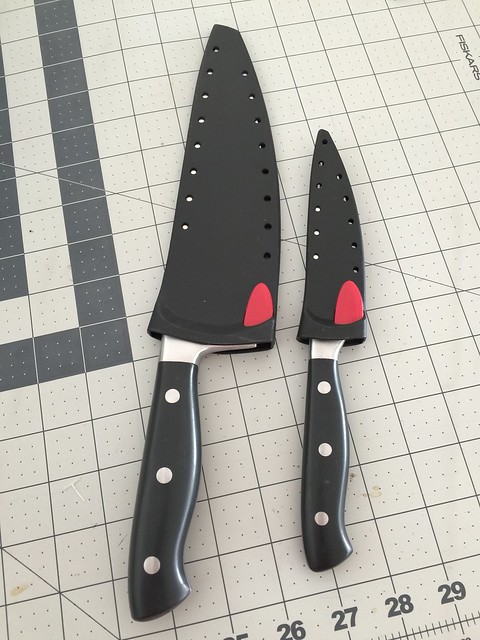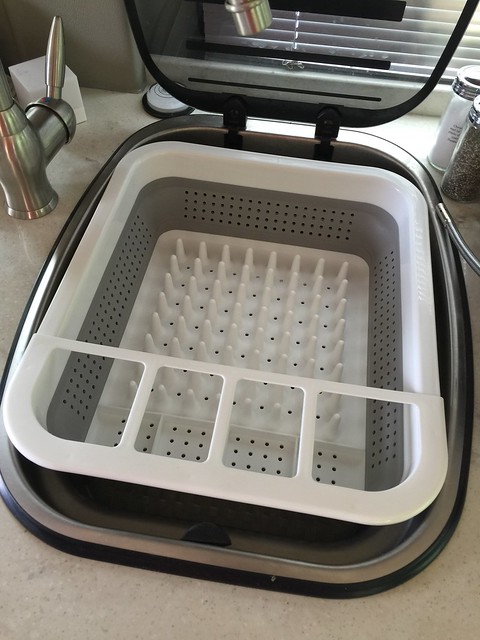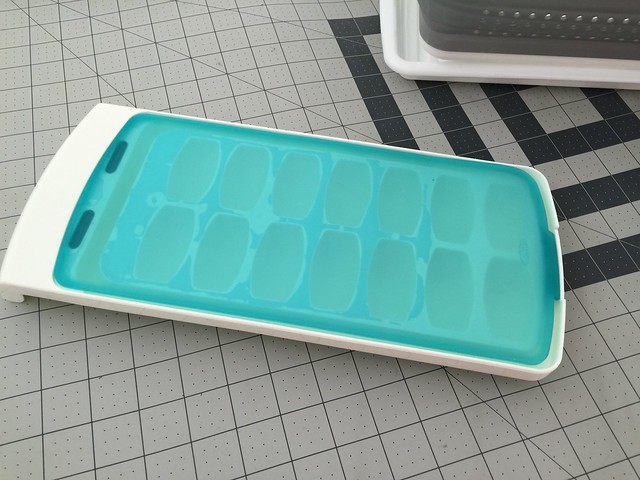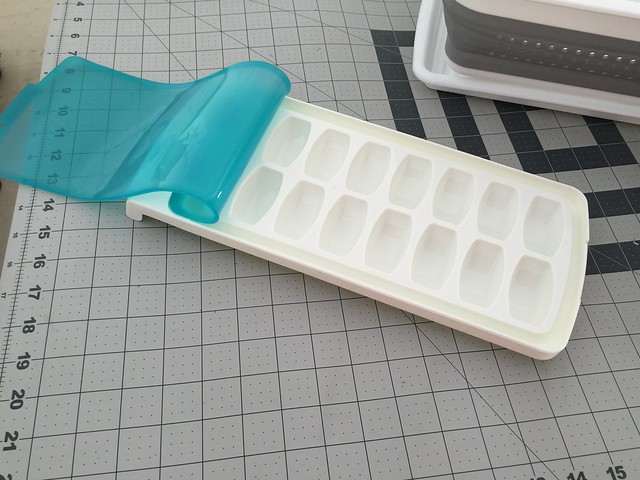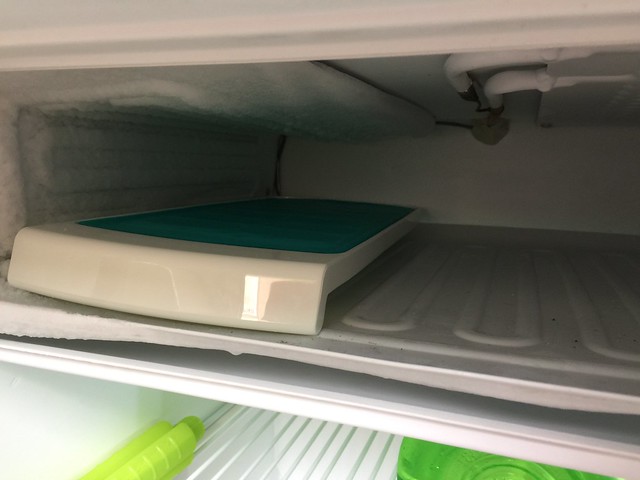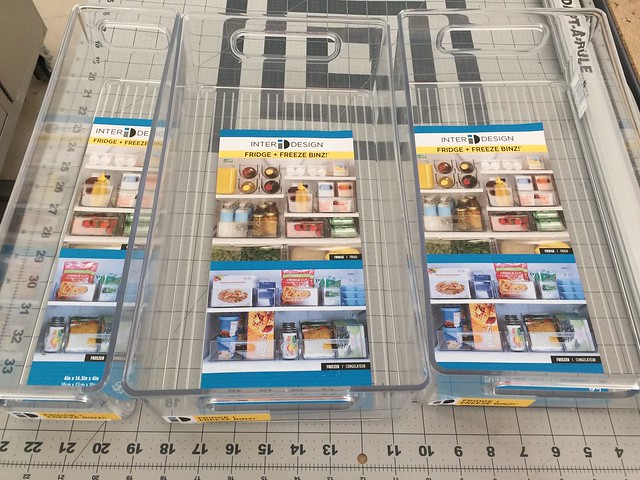Others have reported that their shops would work on this type of thing out in the parking lot. I assume they would remove the pipe and bring it inside to weld on the resonator and then bring it out and bolt it on. Well, my guy wasn't going to work that way - he wanted the van inside the shop and on the lift! I almost backed out of doing this, as it was extremely tight getting her in thru the door and onto those skinny tracks on the lift. He was able to raise it about 4-5 feet off the deck, but there were no inches to spare between the ceiling and my air conditioner.
But it did make the work much easier, and thus quicker. He cut off the pipe with it still attached to the generator. Welded the resonator in place. He did cut the downpipe I brought in and welded that to the resonator first. I wanted the downturn to try to knock down alittle more of the noise.
We also welded on a new modern type hanger. He bent it around the tailpipe to give it more support and also because the tail pipe was a very thin metal. Here it is all installed - took about 45 minutes.
He painted on some cold galvanizing to cover the new welds. Checking underneath, I see no evidence of all the sparks flying. I was quite concerned about the waste tanks and wiring under there, but they appear unscathed. It all seems very secure, but there is still some give in the pipe for the vibration. The hanger has a rubber connection to the van's body.
With my handy dB meter, at around ten feet, I'm reading 74. Not a great deal lower than what I measured back in 2014 (see my post on that test). Inside the cabin, it was considerably less noisy - 60 dB. The biggest difference is in tone. It's alot less harsh of a sound. Much lower tone.
Not only am I happy with it, but it was cheap! That's the kind of bonus I like.
Another project I've had on the back burner was to re-wire my GoPower! 120 watt solar panel so I could plug it into the Zamp port on the side of the van. This port is wired directly to the solar controller, so you can't have another controller in the mix. The GoPower came with it's own controller wired in and mounted to the back of the panel.
So what I did was use some Zamp style cabling (actually, it's from Battery tender). I simply got a pigtail and an extension cable from Amazon, disconnected the existing cable from the combiner to the controller and the long cable lead for the battery, and then connected my new cables to the combiner. Here it is all done - around 15' or so of cable. The Battery Tender cables are the same guage as what came with the panel. The existing cable appeared thicker than it really was because they used a thicker insulation on it. The actual copper is the same size. The trickiest part of this is making sure you get the polarity right. For Zamp, the covered part of the jack is positive.
I also got a few accessories in anticipation of the B-13 rally in Rutherfordton, NC this weekend. I saw this teak mat in a post on Facebook, so I chased it down on Amazon and ordered it.
Here is a link to it: House-Teak-Shower-Mat. It really is solid teak and it comes coated with a oil finish. You do need to add some rubber feat so it doesn't mar the shower pan or slip around. I found some on the hardware aisle at Lowes.
At Target, I got some more of those nice acrylic bins to put in the fridge. One is sized for soda cans! Think using some of these will mean less time on the knees searching thru the fridge. These can act as drawers more or less.
When Eurocampers.com got these vents in, I was quick to order: ProMaster Airvent Cab Window Inserts. These go in your windows so you can leave the van locked up, but still get airflow. Great in conjunction with the MaxxAir roof fan running. They have integrated screens too to keep out the bugs. They are made of a thin metal and appear well made and will last a long time. They came in a clear envelope:
The edges are somewhat sharp, so you need to excercise caution handling and installing them.
They simply slide into the window track and you slowly roll up the window to secure them.
Another thing I wanted was an external window cover as an option in hot, sunny places. You knock alot of heat down by not having the solar energy project thru the glass. Again got this at Eurocampers.com: Promaster Cab Window Cover. Came in a really small storage pouch.
The ends slip over the corners of the driver and passenger doors and is held down with the wipers. There are magnets to hold it against the body and velcro straps for the wirrors and the door handles. After it heated up in the sun, it fits fairly snuggly - you can't open both doors at the same time.
Even though it's heavy vinyl with a soft layer on the underside, you still get lots of light thru it - important in a small van.
